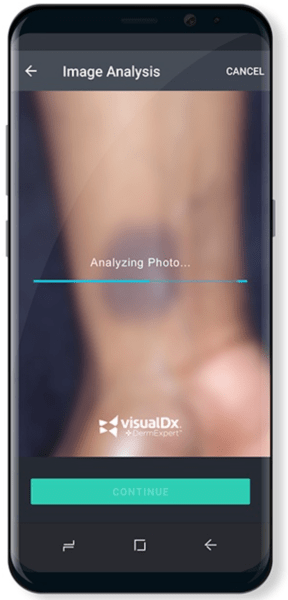A grant from the Bill & Melinda Gates Foundation will help VisualDx put its high-tech medical diagnostic tool in the hands of health care providers in remote parts of the globe.
With those funds, $655,535, the company plans to create a stand-alone version of VisualDx, its award-winning, web-based clinical support system. That version would be able to operate without access to the internet or cell phones.
Even experienced physicians sometimes have difficulty determining which disease is afflicting a patient.
“(A) measles rash and a medication rash might look remarkably similar,” says Art Papier M.D., CEO and co-founder of the firm VisualDx. “Sometimes, even an expert can’t tell the difference.” Papier is also an associate professor of dermatology and informatics at the University of Rochester Medical Center.

Once VisualDx has been downloaded onto a computer or cell phone, physicians and other health care professionals can use it to more easily and accurately diagnose infectious diseases and other medical problems.
“It is a point-of-care assistant for medical professionals, helping them to make better diagnosis, testing and treatment decisions,” Papier says. “It has particular strengths in dermatology, and areas of medicine where there are visual clues on the skin, but it handles diagnoses across all specialties, and all (areas) of medicine.”
Though there are no reports that COVID-19, the novel coronavirus, manifests itself in a rash, VisualDx could prove a useful diagnostic tool as nations confront that disease.
“Hospitals and clinics will be busier,” Papier explains. “Tools to help sort out complex diagnostic scenarios are needed, as there is more pressure on the system.”
Here’s how the diagnostic system works. When a patient comes in with, say, skin lesions, the physician or other health care professional involved enters the type and location of those lesions, the person’s other symptoms, his or her medical history and other information into the program.
“We can accept information like (whether) the patient traveled to a foreign country,” Papier explains. “There are certain infectious diseases that you might acquire in that country.”
As that information is entered, the program searches through its database, winnowing down the possible illnesses or conditions that could have caused the lesions. While going through that process, it presents photos of the types of lesions that each one causes. The medical practitioner can then compare those images with those on the patient’s skin.
Once VisualDx is finished, the practitioner is able to more accurately diagnose the patient’s infectious disease or rash. The system can also be used to determine the causes of non-skin-related complaints.
Since Papier’s firm released its original version of VisualDx in 2001, more than half of all medical schools and over 2,300 hospitals and other medical providers in the U.S. have adopted the system. In addition, the system has won the Best in KLAS award five years running. KLAS, a Utah-based firm that researches health care information technology, annually presents the award to vendors in recognition of their outstanding efforts to deliver patient care.
In 2017, VisualDx made diagnosis even easier with the release of DermExpert, an add-on to its existing clinical support system that’s made for use with smartphones. DermExpert accepts and analyzes digital pictures of lesions or skin conditions, after which VisualDx uses the resulting data to render a diagnosis. The clinical support system and DermExpert are available for sale or on a subscription basis.
While VisualDx has spread to health care providers around the country, those out of reach of the internet or cell phone systems have been unable to obtain the system’s benefit—so far. With the aid of the Gates Foundation’s funds, Papier’s company has set out to create a stand-alone version of the system.
“The use off the internet is to serve the need in low-resource settings, where there is low or nonexistent internet availability and cell phone signals,” Papier explains.
Those remote areas often lack effective health care systems, as well. The stand-alone program will include a database that’s tailored to the characteristics of the people of the region in which it is used, and the diseases that they might suffer.
“For use in Africa, the diseases will fit the diseases that occur in Africa,” Papier explains.
The African database could contain such illnesses as dengue fever, along with the infectious diseases that AIDS patients might suffer. It would also be customized to better serve the people of that continent.
“When viewing pictures of diseases, the user will see imagery of the diseases in patients with deeply pigmented skin,” Papier explains.
VisualDx’s newest version will be suitable for even minimally trained health care providers to use. Papier hopes to roll out that version by this fall.
Mike Costanza is a Rochester Beacon contributing writer.